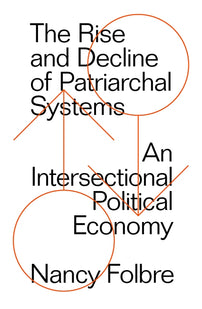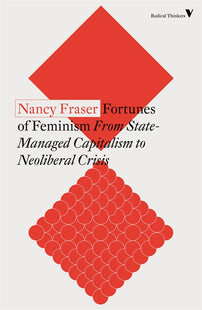Defining the Patriarchal
In an excerpt from her new book, Nancy Folbre explains how patriarchy manifests in our political institutions, rights, and laws.

An excerpt from The Rise and Decline of Patriarchal Systems: An Intersectional Political Economy by Nancy Folbre.
Patriarchal Rights and Rules
Patriarchal political institutions fall into three somewhat overlapping categories: property rights over women and children; explicit restrictions on the individual rights of women, children, and sexually nonconforming individuals (often including limits on access to productive physical assets such as land or financial wealth); and rules of remuneration for time, effort, and resources devoted to the care of others, especially dependents.
Defined literally as “rule of the father,” patriarchal law has more historical than contemporary relevance. Today, relatively few national societies are governed by laws that give men property rights over wives and children, and gender asymmetries in individual rights have been dramatically reduced. This process of transformation testifies to the impact of institutional change driven by new forms of collective empowerment and mobilization. Social movements have played a particularly large part in global efforts to combat violence against women.
Yet the crumbling of explicitly patriarchal law has offered men, as well as women, important benefits, including increased freedom from paternal control and reduced obligations for the support of dependents. Partly as the result of the expansion of market exchange, commitments to the care of others came to be seen as sources of personal satisfaction rather than as necessary contributions. It is easier to abolish old rules than to establish new ones: reluctance to acknowledge the economic value of the care services that women continue to provide has made it easy for both men and employers to free ride on voluntary contributions to the production and maintenance of human and social capital.
Property Rights over Women and Children
Partly because so much feminist scholarship has defined the patriarchal in purely cultural and psychological terms, most economic analysis of property rights focuses on the contrast between private and collective ownership of physical or financial assets. In a prescient exception, the institutionalist economist Steven Cheung published an article in 1972 detailing customary practices in prerevolutionary China that gave parents substantial control over the younger generation, particularly young women. Cheung argued that daughters and daughters-in-law, many with bound feet that confined them to childbearing and family care, were easier to control than sons, whose productive contributions took them farther afield. While Cheung put more emphasis on parental power than on gender inequality, he explicitly recognized patriarchal property rights.
Such rights have a long history in most societies. Subjection to another person’s authority tantamount to ownership extended well beyond the purview of formal slavery. As a later chapter will argue, the enslavement of women probably preceded and provided a model for the enslavement of men. Yet patriarchal property rights often intersected with, and were sometimes entirely countervailed by, institutional structures based on other dimensions of collective conflict. For instance, most patriarchal slaveholding societies denied male slaves rights to marriage or family authority, as well as denying female slaves control over their own sexual and reproductive capabilities.
Political approval of coercive and violent abuse of women by their own kin has been widespread. Foot-binding in China persisted for centuries, and genital mutilation remains pervasive in some areas of North Africa and the Middle East. Physical abuse of wives by husbands was legally tolerated in much of Europe until the late nineteenth century. Physical abuse was supplemented by many other forms of physical control. As August Bebel noted in his late nineteenth-century feminist classic, Women and Socialism, Prussian husbands had legal authority over whether and how long their wives could breastfeed.
Patriarchal rules typically enforce a harsh sexual double standard, ostensibly in order to allow men to guarantee paternity. This double standard applies even to women long past menopause and remains influential even where access to modern DNA testing makes it possible to ascertain biological parentage. Whatever its motives, control over women’s sexuality has long had the effect of limiting their mobility as well as constricting their choices. Fathers and brothers have often treated young female family members as property that could literally be devalued by sexual experience. At the opposite extreme, the institutionalization of prostitution—one of the earliest forms of paid employment for women—provided men with relatively inexpensive sexual gratification free of any responsibility for mutual pleasure or reproductive consequences.
Patriarchal control over women’s and children’s activities has often been enforced by threat of physical punishment or incarceration. Roman law gave the male head of household the right of life and death over his children. In France, the Napoleonic Code stipulated husbands’ authority over wives and gave fathers the right to incarcerate disobedient offspring. In the early nineteenth century, many states within the United States passed laws stipulating wifely subordination, some of which remained legally enforceable until the 1970s. Such laws often codified a husband’s right to sexual access without his wife’s consent.
Arranged marriages often involve economic exchanges that benefit the natal family of the bride or the groom, giving the older generation incentives to control marriage decisions. Whether the exchange takes the form of bride price or dowry, brides are disadvantaged. In India, the threat of violence against wives is sometimes used to extract greater dowry payments from their families, especially in response to economic stress. In some areas of Sub-Saharan Africa, women cannot leave their husbands unless they repay the transfer of cattle made by their husband to their father.
While explicit property rights over women and children are relatively uncommon today, implicit property rights remain in force. The coercive practices typical of organized prostitution and trafficking are tantamount to slavery. Legal restrictions on women’s rights to contraception and abortion tacitly assert public control over women’s bodies. Even more common are abuses of omission, such as failure to effectively enforce laws against domestic violence or sexual harassment in the workplace. According to the World Health Organization, more than one-third of all global women have been victims of either physical or sexual violence.
Gendered and Sexed Restrictions on Individual Rights
Many aspects of traditional family law such as monogamy, restrictions on divorce, obligations for the support of family members, and sanctions against same-sex sexuality limit men’s as well as women’s choices. Gendered constraints, however, are typically more binding on women. Economists often describe marriage as a partnership in which both husbands and wives gain from trade. Yet few marriage contracts have taken the same form as legal partnerships. Under English common law, for example, a wife relinquished her legal rights to separate property or income. Laws governing married white couples in the United States before 1850 gave husbands formal authority over the activities, earnings, and wealth of their wives and minor children in return for provision of financial support. Financial support was stipulated as a minimal level of subsistence, not a specific share of family income. Early nineteenth-century feminists in the United States campaigned unsuccessfully for legal reforms that would guarantee the rights of wives to one-half their husbands’ earnings.
Because marriage constrains the lives of women more narrowly than those of men, rights to divorce are more consequential for them. Patriarchal laws have traditionally made it easier for men to exit marriage than women, with asymmetric grounds for divorce (such as sexual infidelity of the wife but not the husband). Some societies gave only husbands the right to unilateral divorce; under some forms of traditional Islamic law still in force today, a husband can effectively banish a wife from his household by oral proclamation. Such asymmetries have profound implications for health and happiness. Close analysis of the uneven process of divorce law liberalization that got underway in many US states about 1969 suggests that it decreased female suicide, domestic violence, and wife murder.
Harsh laws against unconventional sexual practices, especially those unlikely to lead to conception, have a long and variegated history. Never completely ubiquitous, they were sometimes propagated by colonization. The British Empire famously changed the Indian Penal Code in the 1860s to make all forms of oral or anal sex punishable by life imprisonment, a law that remained on the books until 2018. While the harshest sanctions have often been applied to gay men, women as well as men remain subject to punishment. In 2018 two women in Malaysia were caned for suspicion of attempting lesbian sex.
The legal enforcement of compulsory heterosexuality has often been particularly stringent in societies prizing high birth rates. This historical association does not imply that pro-natalist societies are always homophobic or that homophobia always has pronatalist effects. Rather, it illustrates parallels between the governance of gender and the governance of sexuality that remain significant today: strong adherence to traditional gender norms is often closely associated with disapproval of gay, lesbian, bisexual, and transsexual identities.
Patriarchal family laws have typically given male household heads the power to prevent wives and minor children from engaging in activities outside the home, as well as control over their market earnings. Explicit restrictions on women’s access to education and employment have been widespread and remain in effect in many countries. While international campaigns such as the Convention Against All Forms of Discrimination Against Women have steadily gained momentum over the past twenty years, enforcement has proved patchy and uneven.
A number of large international databases detail the current legal and political dimensions of gender inequality, including the Gender, Institutions and Development database developed by the Organization for Economic Cooperation and Development, which scores and weights gender bias in four categories: family legal code, physical integrity, civil liberties, and ownership rights. The design and analysis of a Social Institutions and Gender Index based on variables constructed from this database reveal regional and country-level variations correlated with measured economic outcomes. Not surprisingly, women fare better economically when they have greater legal and political power. Research also shows that women’s political empowerment promotes the provision of public goods, investments in education, and lower child mortality.
Since 1995, the United Nations Human Development Report has constructed national indices of gendered economic outcomes. The Gender Development Index assesses women’s life expectancy, educational attainment, and per capita income relative to men’s; the Gender Empowerment Measure assesses political representation (number of parliamentary seats held), economic opportunity (employment in public office, managerial, and professional positions), and estimated earned income for women compared to men. Both these indices reveal significant progress over time that does not belie the persistence of significant inequalities linked to family law, rights to participate in activities outside the home, and private asset ownership.




